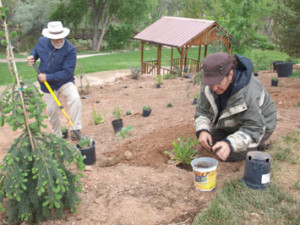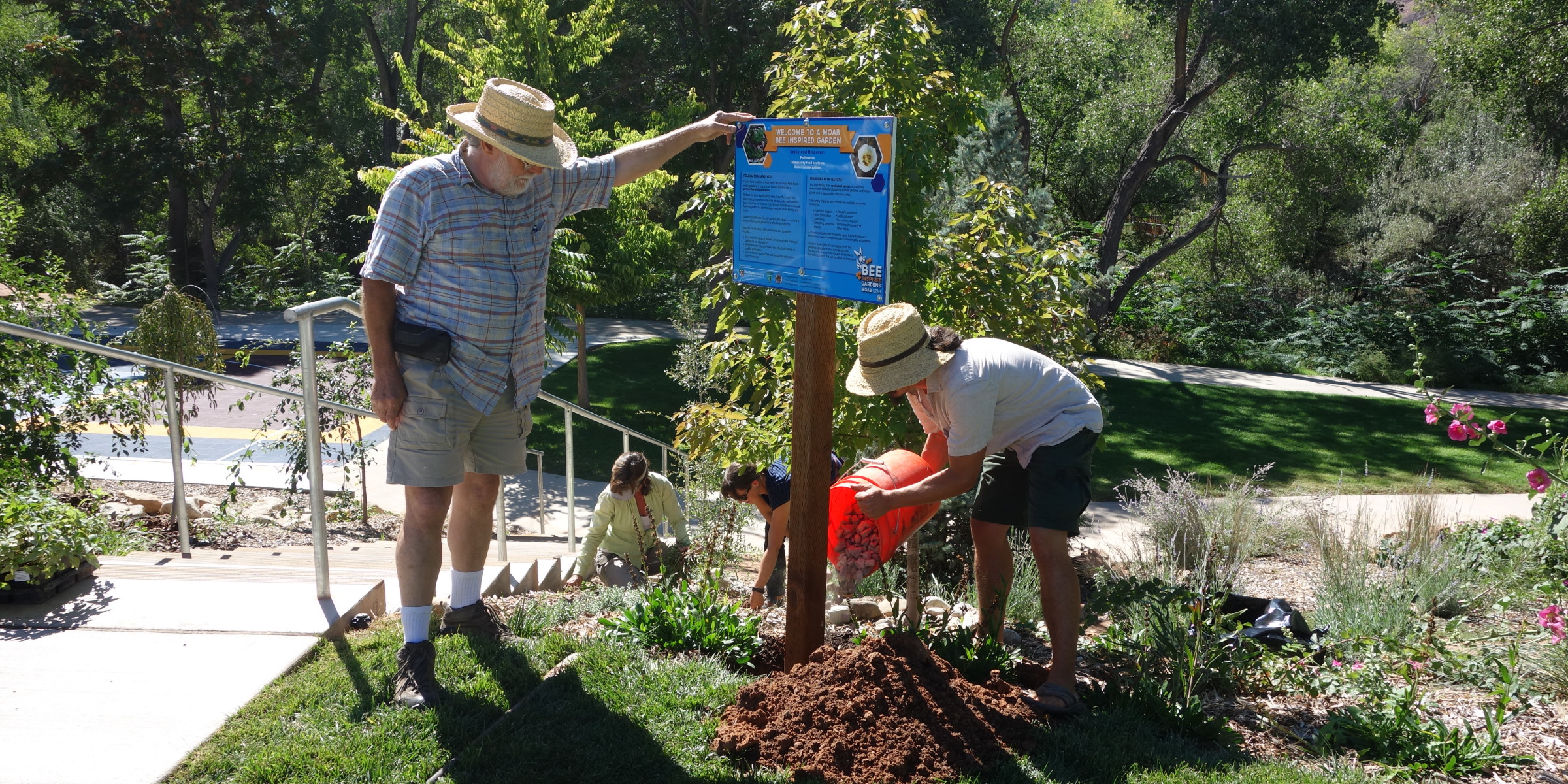MOAB BEE INSPIRED GARDENS
A Collaborative Community Movement
The Colorado Plateau is a rich and unique ecosystem. It is estimated that 10% of the plant species found here are only found in this area. Moab was settled over 100 years ago near the Colorado River, and occupies an area that is home to many of these unique plant species. Moab’s unique geography and variety of pollinators, including beetles, flies, butterflies, birds, the European honey bee, and approximately 900 native bee species, has inspired old and new residents to help sustain this diversity through growing perennial, drought tolerant, and native plants.
Utah is considered by our own Department of Wildlife Resources to be the second driest state in the Nation. Ironically, water use data indicated that residents in this state are among the top water users per capita in the nation. While some of this water is used for industry, as in most Western states, a great deal of it is used to water landscapes around homes and businesses.
Moab has a long history of agriculture. At the turn of the 20th century, fruit grown in the valley traveled by rail to markets in the East. In recent years the economy has turned towards tourism, focused on the landscape around us. As often occurs in developed areas, landscapes in town don’t always reflect the opportunities and diversity around the town.
The Grand County Conservation District has been working with pollinators and improving pollinator habitat for many years. In 2013 a pollinator workshop was held, and well attended, to talk about honey bees and native pollinators and discuss ways to improve landscapes in the area to better support all pollinators. The MoaBee Beekeepers group, a local plant producer and the Conservation District envisioned a follow up workshop to show how to plant a garden that encourages pollinators.

Rhonda Gotway, front, and Jerry Shue break ground on the first of many planned bee-friendly gardens around Moab. They were joined by Kara Dohrenwend of Wildland Scapes, USU Extension Sustainability intern Jeremy Lynch and Youth Garden Project garden manager Jess Oldham. Photo by Rudy Herndon
In 2014, new energy at Utah State University helped the original group grow to include Community Rebuilds, Moab City, the Grand Conservation District, MoaBees, Moab Bureau of Land Management, USDA Natural Resources Conservation Service, and Utah State University students and professors. Withthis new energy, more ideas were added to the pollinator habitat planting and the Moab Bee Inspired Gardens (BIG) Initiative was born.
Moab BIG projects not only improve pollinator habitat, but also conserve water through appropriate plant choices and water harvesting techniques, and include plants that are also a food source for both pollinators and humans.
The first official Moab BIG project was installed in early 2014 at Rotary Park with support from Moab City. More Moab BIG projects followed, and are now installed at USU Moab, Canyonlands Field Institutes Professor Valley Field Camp, and Community Rebuilds’ intern campus. The Youth Garden Project has always incorporated many of these BIG principles, through food production coupled with perennial native plantings and use of drip irrigation and slightly lowered beds and they are now sharing information about Moab BIG as well through a garden sign.
Moab BIG projects will soon come to the BLM Goose Island Campground, Mayberry Native Plant Propagation Center, the Moab Charter School, Aarchway Inn and in numerous locations along the creeks.
In town, projects can be visited on a walking tour, as each project will have signage identifying them as a Moab BIG project. Eventually, these signs may include information leading visitors to project that are farther afield along the River Road. The diversity of locations and designs found in these gardens provides a myriad of research opportunities for the University, as well as increase the possibility that Moab residents and visitors may find something at these gardens that inspires them in their own landscape projects.

